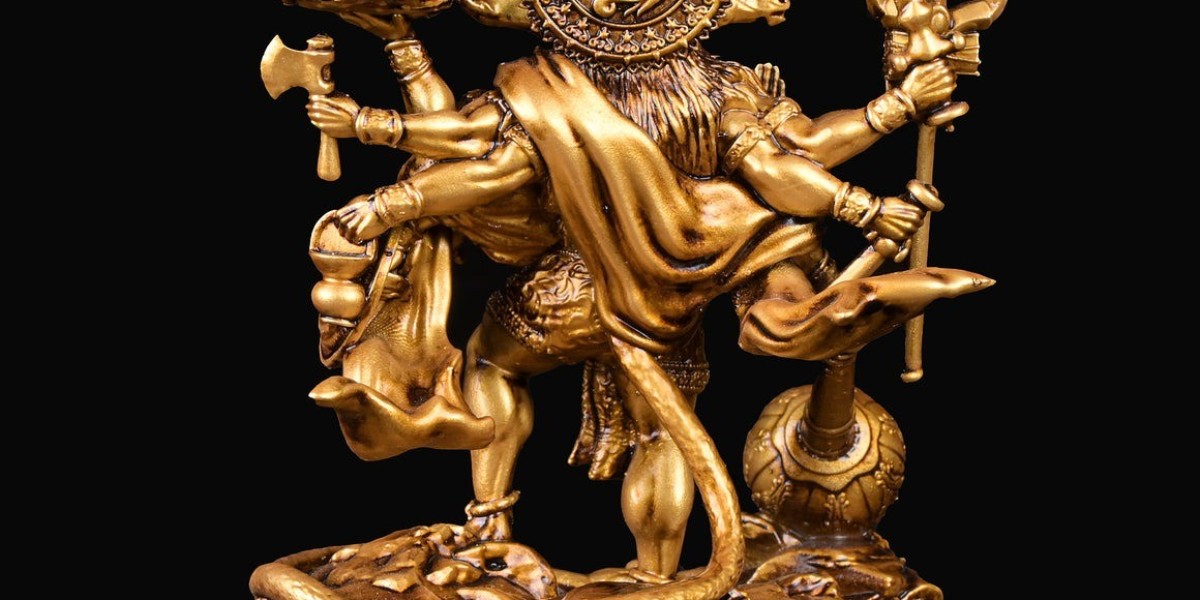Introduction
The Panchmukhi Hanuman statue holds a special place in Hindu religious practice and iconography. As a representation of Hanuman, the revered deity known for his immense strength, devotion, and protective qualities, the Panchmukhi Hanuman statue is unique in its depiction. "Panchmukhi" translates to "five-faced," and this form of Hanuman is particularly significant due to its multifaceted representation of divine attributes and powers. In this article, we will explore the symbolism, significance, and aspects of the Panchmukhi Hanuman statue in detail.
Historical and Mythological Background
Hanuman, a central figure in the Indian epic Ramayana, is a symbol of devotion, loyalty, and strength. According to Hindu mythology, Hanuman is the son of the wind god Vayu and Anjana, a celestial nymph. His unwavering devotion to Lord Rama and his heroic deeds, including lifting mountains and vanquishing demons, have made him a beloved deity.
The Panchmukhi Hanuman statue is an elaborate representation that signifies five different aspects or forms of Hanuman. This form of Hanuman is believed to have emerged during the cosmic battle between the forces of good and evil. The five faces panchmukhi hanuman statue the various energies and powers of Hanuman, offering a broader perspective on his divine nature and protection.
Symbolism of the Five Faces
Hanuman's Face (Central Face): The central face of the statue typically represents the primary form of Hanuman, displaying his most recognizable features: a strong physique, a monkey-like face, and a devoted expression. This face embodies the qualities of strength, courage, and devotion.
Varaha Face (Boar Face): The Varaha face represents the boar incarnation of Lord Vishnu. It symbolizes the protective and nurturing aspects of Hanuman, as Varaha is known for rescuing the Earth from the demon Hiranyaksha. This face signifies Hanuman’s role in safeguarding and preserving the cosmos.
Narasimha Face (Lion Face): The Narasimha face symbolizes the lion incarnation of Lord Vishnu. It represents fierce protection and destruction of evil. This face highlights Hanuman's role in eliminating negative forces and safeguarding dharma (righteousness).
Garuda Face (Eagle Face): The Garuda face, resembling the mythical bird Garuda, represents speed and divine flight. This aspect signifies Hanuman’s ability to swiftly traverse distances and deliver divine messages or protection, emphasizing his role as a messenger and protector.
Hayagriva Face (Horse Face): The Hayagriva face symbolizes the horse-headed form of Lord Vishnu, known for wisdom and knowledge. This face highlights Hanuman’s association with intellect, learning, and divine insight, underscoring his role in guiding and enlightening devotees.
Significance of the Panchmukhi Hanuman Statue
The Panchmukhi Hanuman statue is revered for its ability to invoke a range of divine qualities and offer comprehensive protection to devotees. Each face represents a different aspect of divine power, allowing the statue to address various needs and challenges in the devotee's life.
Protection: The multifaceted nature of the statue ensures that devotees are shielded from different forms of negative energies and obstacles. The five faces collectively provide a holistic protective shield, ensuring that individuals are safeguarded from physical, emotional, and spiritual adversities.
Spiritual Growth: The Panchmukhi Hanuman statue also aids in spiritual growth and enlightenment. Each face symbolizes different divine attributes, encouraging devotees to cultivate strength, wisdom, and devotion in their own lives.
Fulfillment of Desires: The statue is believed to grant the wishes and desires of devotees, particularly when it comes to overcoming obstacles and achieving success. Hanuman’s divine presence and multifaceted representation are thought to bring about positive changes and fulfill aspirations.
Healing: The divine energy emanating from the Panchmukhi Hanuman statue is also associated with healing and well-being. The statue’s multifaceted nature allows it to address various aspects of physical and mental health, promoting overall wellness.
Placement and Worship
For those who wish to incorporate the Panchmukhi Hanuman statue into their homes or places of worship, certain guidelines are often followed to ensure that the statue’s divine energies are maximized.
Placement: The statue is ideally placed in a clean and prominent location, such as a dedicated altar or prayer room. It is recommended to place the statue facing the east or north to align with traditional vastu principles.
Daily Worship: Regular worship and offerings are encouraged to maintain the statue’s divine presence and ensure its protective and benevolent energies. This can include daily prayers, incense offerings, and recitation of Hanuman Chalisa or other devotional hymns.
Special Occasions: The Panchmukhi Hanuman statue is often worshipped during special occasions and festivals dedicated to Hanuman, such as Hanuman Jayanti. Special ceremonies and rituals can be performed to honor the deity and seek his blessings.
Conclusion
The Panchmukhi Hanuman statue stands as a profound symbol of divine strength, protection, and spiritual wisdom. Its five faces represent various divine attributes and powers, offering a comprehensive shield against negative energies and obstacles. By integrating the Panchmukhi Hanuman statue into one’s spiritual practice, devotees can benefit from enhanced protection, spiritual growth, and fulfillment of desires. As a representation of Hanuman’s multifaceted divine nature, the statue serves as a powerful reminder of his enduring presence and blessings in the lives of his devotees.








